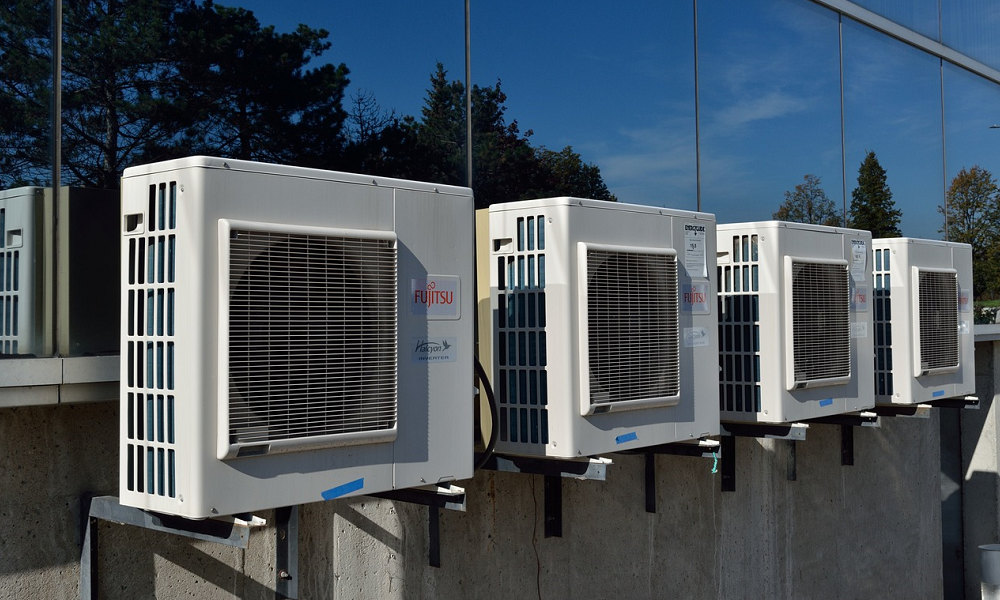Reviews
Simple Tips to Lower Costs With Commercial HVAC Systems

Maintaining an energy-efficient workspace can often feel overwhelming, especially when considering the operational costs of commercial systems. Keeping indoor environments comfortable while balancing expenditures requires strategic planning and attention to detail. The solution is adopting practical methods that boost efficiency without adding unnecessary expenses.
Commercial HVAC solutions heat, cool, and ventilate workplaces and are integral to daily operations. However, they can also account for a significant portion of utility bills. Choosing the right commercial heating and cooling system can improve efficiency and reduce long-term energy costs. Implementing practical strategies to enhance system efficiency can save money while extending the life of essential equipment.
Prioritise Routine Maintenance for Efficiency
The first step to savings is regular system maintenance. A well-maintained commercial HVAC system operates more effectively, which translates to lower energy consumption and reduced expenses. Scheduling routine inspections ensures components are in optimal condition, preventing unexpected breakdowns. Addressing issues early, such as worn-out parts or clogged filters, can minimise operational disruptions and extend the equipment’s lifespan, added Technical Hot & Cold Parts, an HVAC parts shop.
Professional servicing should include:
- Cleaning and replacing air filters to enhance airflow
- Lubricating moving parts to prevent wear and tear
- Checking refrigerant levels to maintain cooling efficiency
When maintenance isn’t enough, upgrading to modern systems offers lasting benefits.
Upgrade to Advanced Systems for Long-Term Savings
Modern systems incorporate cutting-edge technology designed to maximise energy use. Upgrading outdated equipment might involve initial costs but leads to significant long-term savings. Advanced units often include adjustable speeds and programmable settings that adapt to usage needs.
Energy-efficient models meet higher performance standards while consuming less power. Choosing systems with intelligent controls allows real-time monitoring, ensuring equipment operates only when necessary. These upgrades cut costs and reduce strain on the overall system, helping it last longer. Zoning can further optimise energy use and comfort.
Incorporate Zoning for Tailored Comfort
Dividing the workspace into zones helps optimise energy usage. This approach allows for individual climate control settings in different areas, reducing waste. Rooms or sections with varying occupancy levels, such as meeting rooms or storage areas, can adjust their settings independently.
Zoning ensures targeted cooling or heating where it’s needed most. It also reduces the load on equipment, lowering energy bills and improving system longevity. This tailored approach creates a comfortable and efficient environment without unnecessary resource overuse. Smart thermostats take precision control to the next level.
Adopt Smart Thermostats for Precision Control
Temperature management is critical for maintaining cost-effective operations. Smart thermostats enable precise adjustments, allowing businesses to schedule temperature changes based on working hours. Remote control capabilities allow for altering settings even when the building is unoccupied.
Additional benefits of these devices include data monitoring, which provides insights into energy use trends. Businesses can make informed decisions about adjustments, further improving cost management. Over time, these features significantly enhance the overall efficiency of climate control systems. Efficient ductwork is another key to reducing energy waste.
Improve Efficiency with Duct Sealing
Air leaks in the ductwork can result in substantial energy losses. Sealing any gaps or cracks ensures that conditioned air flows directly to its intended destination, reducing strain on the system. Proper insulation is equally important, especially for ducts in unconditioned spaces like basements or attics.
These steps improve the distribution of cooled or heated air, enhancing overall performance. Addressing ductwork efficiency is a simple yet impactful measure that contributes to lower energy bills. Energy-saving habits complement system efficiency measures.
Energy-Saving Practices in the Workplace
Workplace habits play a significant role in minimising energy consumption. Encouraging small changes among employees can complement larger efficiency efforts. Consider the following practices:
- Turning off lights, computers, and other devices after use.
- Closing blinds or curtains to prevent excessive sunlight from heating rooms.
- Using energy-efficient appliances and tools wherever possible.
These habits reduce overall energy use and help maintain a comfortable indoor environment. Promoting staff awareness of energy conservation contributes to consistent savings over time. Monitoring system performance ensures consistent efficiency.
Monitor System Performance Regularly
Tracking system efficiency allows for early identification of potential issues and inefficiencies. Regular monitoring ensures that equipment meets operational demands without consuming excess energy. Installing advanced monitoring systems provides detailed insights into usage patterns and areas for improvement.
Businesses can use these insights to make informed decisions about scheduling maintenance, implementing upgrades, or adjusting operational practices. Effective monitoring also ensures compliance with energy regulations and prevents unexpected spikes in utility bills. Smart solutions offer long-term benefits for energy-conscious businesses.
Smart HVAC Solutions for Modern Businesses
Efficient climate control is essential for maintaining productivity in commercial spaces. Businesses that invest in advanced systems benefit from energy-efficient technologies and tailored designs that address their unique needs. Leading industry solutions often integrate innovative features, ensuring optimal performance while reducing energy usage.
Choosing systems focused on sustainability and innovation can help businesses achieve long-term savings and reliable comfort. Researching reputable providers offering comprehensive commercial solutions is a step toward attaining efficient and dependable operations.
Implementing cost-saving measures for commercial HVAC systems is not just about reducing expenses—it’s about creating a sustainable, efficient, and comfortable environment for everyone. Strategic upgrades, regular maintenance, and innovative energy practices ensure long-term benefits, from lower utility bills to enhanced system reliability. Prioritising efficiency today lays the foundation for a more productive and cost-effective future.

-

 World1 week ago
World1 week agoEthiopian volcano erupts for first time in thousands of years
-

 Health2 days ago
Health2 days ago8 kittens die of H5N1 bird flu in the Netherlands
-

 Legal7 days ago
Legal7 days agoUtah Amber Alert: Jessika Francisco abducted by sex offender in Ogden
-

 US News6 days ago
US News6 days agoExplosion destroys home in Oakland, Maine; at least 1 injured
-

 Health7 days ago
Health7 days agoMexico’s September human bird flu case confirmed as H5N2
-

 Legal3 days ago
Legal3 days ago15 people shot, 4 killed, at birthday party in Stockton, California
-

 World7 days ago
World7 days agoWoman killed, man seriously injured in shark attack on Australia’s NSW coast
-

 Health6 days ago
Health6 days agoMarburg outbreak in Ethiopia rises to 12 cases and 8 deaths




